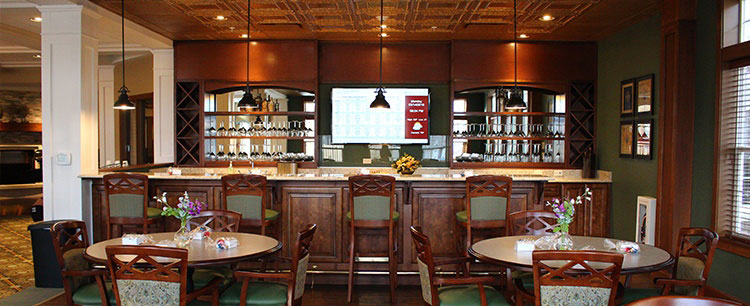To create a warm and welcoming environment in an assisted living facility, the aesthetics of the facility need to be not only beautiful and elegant but also strategically applied to fit the needs of the residents. Open floor plans, wide hallways, and familiar spaces are all things that should be considered, but the layout isn’t the only design aspect that contributes to the feel of the facility. Interior design plays a large part in the comfort of a community, so you shouldn't overlook the role interior design can play.
When designing for a senior environment, says Mitchell S. Elliott, chief development officer, Vetter Health Services. “It’s not about what I like. It’s what they like.” This can often mean ignoring trends popular in other environments. Soothing browns, for example, are popular in homes, but they can turn to black for an older eye. This is only one of the considerations a designer needs to think about when designing for seniors.
Simple Decor
When it comes to decorations, less is more. Extra clutter like knickknacks can be harmful, causing confusion or creating falling hazards. Family pictures or soothing nature images rather than bold patterns can create a calm environment. Plants also add a bright element while creating natural air filters and giving residents something simple to care for.
A Neighborhood Feel
Sterile dining halls that resemble cafeterias are being pushed aside to make room for spaces that replicate a favorite neighborhood bistro, cafe or pub. These areas are turning into spaces where residents come to socialize rather than just eat. And trends like display cooking, so residents can watch their food being made, are turning dining into an inviting experience.
The layout of the facility itself should be easy to navigate and comforting to residents. Many facilities, like Vista Springs, have chosen the layout of a neighborhood to achieve this, using street names to help residents find their way. Other facilities include general stores where seniors can purchase their own items or full-service salons; just like home.
Mimicking the Home
While high-end wall and floor coverings were once in vogue for communities, many environments are now opting for traditional paint and simple wall accessories, a more accurate reflection of what a resident might choose at home. Especially for residents in memory care facilities, bold and loud patterns can cause confusion and should be traded in for simple designs broken up by wall art or family photos.
Furniture should reflect what they enjoyed at home but also match their current needs. For example, the deep, cushy couches they once loved may be hard to get out of now and should be traded in for firmer cushions. This same, sturdy furniture can be used for balance when needed.
Lighting
Natural light not only brightens a room and makes it more welcome and cheerier but also helps improve sleep cycles. Exposure to natural light, through skylights or picture windows, can increase exposure to Vitamin D, helping to reduce ailments like Osteoporosis and lower blood pressure. In addition to the benefits, natural lighting also eliminates the disadvantages of artificial lighting like the spike in electrical bills and even HVAC costs.
And, for those in dementia care, natural light can even be a memory trigger, bringing back memories of times spent outside. Additionally, natural light is the best source of light for those with aging eyesight.
Color
Color play an important part in design. Colors for furniture and walls should contrast making it easier to maneuver around large furniture. Neutral and warm palettes are best for visibility and colors such as greens, yellows, and blues are considered healing colors.
Vista Springs' Memory Care utilizes Amber Light in bathrooms. This helps orient residents and trigger memory cues to remember habitual tasks.
“Communities for the aging adult have probably never been better than they are today,” says Sheila Bosch, director of research, Gresham Smith & Partners. The interior design of these facilities plays a large part in that. The next time you tour a facility, take a look around, take it all in, and think about how the colors, lighting, and decor make you feel.





